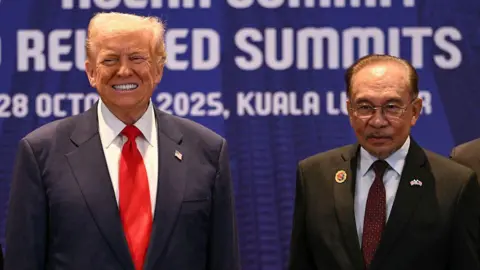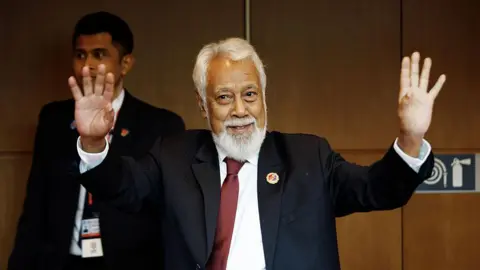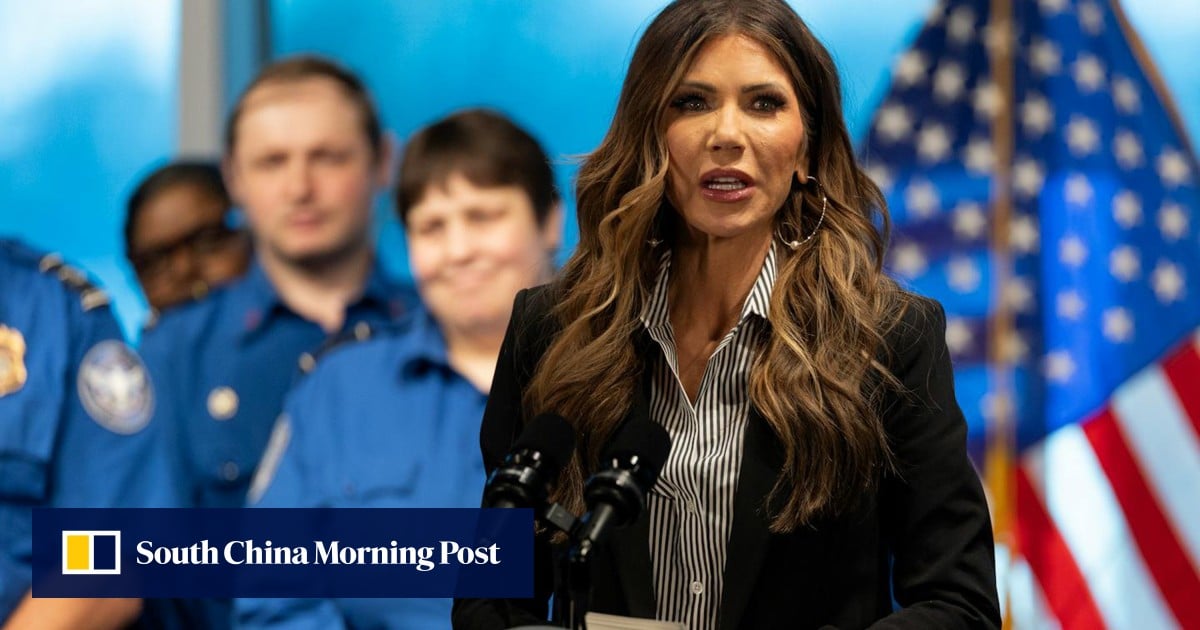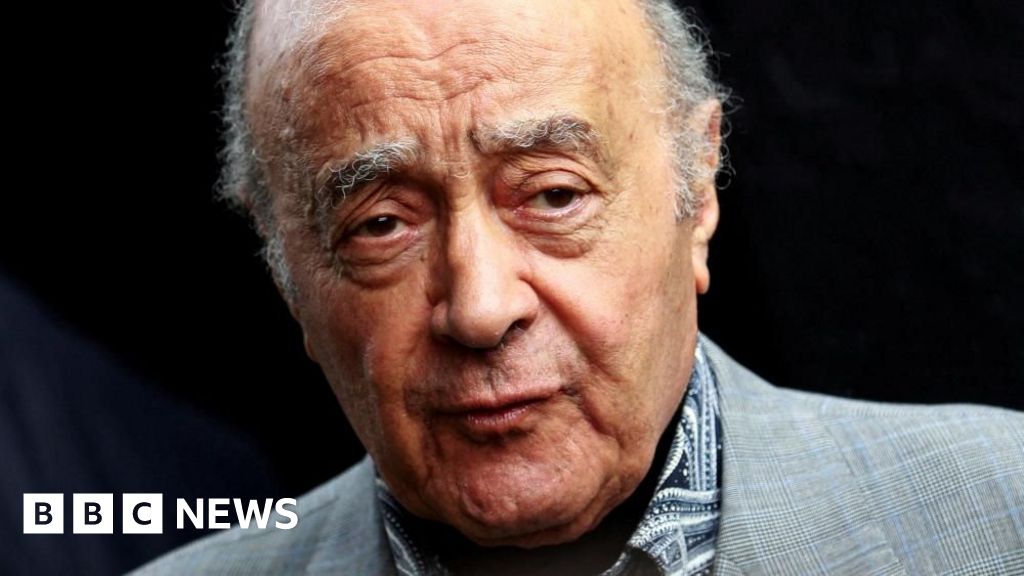Tessa Wongin Kuala Lumpur
 AFP via Getty Images
AFP via Getty ImagesAs US President Donald Trump boarded Air Force One in Kuala Lumpur, it was at the end of a busy 24 hours that, by the White House’s account, included a flurry of deals that brought “peace and prosperity” to the region.
The headlines will follow Trump as he flies to Japan and then South Korea, for a much-awaited meeting with Chinese leader Xi Jinping.
But getting him to the Asean Summit gave the grouping of South East Asian nations its biggest moment in the sun, at a time when many have been questioning its relevance.
For Trump the biggest draw was that he got to preside over a “peace deal” between Thailand and Cambodia whose long standing border dispute erupted into open conflict in July.
He wanted this in his ongoing quest to clinch a Nobel Peace Prize for resolving wars, although the Thais were reluctant to call it a “peace deal”.
This came on the back of another rare win for Asean, whose chair, Malaysian Prime Minister Anwar Ibrahim, brokered the initial ceasefire between the two countries.
Part of these successes could be attributed to Anwar himself, a veteran politician who could leverage his long-term relationships with the Cambodians and Thais, while charming Trump – even getting away with a sensitive joke about jailtime.
But in the end it was clearly US pressure that sealed the deal, with Thailand and Cambodia quick to cease hostilities following Trump’s economic threats.
Sunday’s signing was accompanied by announcements of US trade deals with Cambodia and Thailand, with Trump making it plain he intends to use business deals to pressure countries to make peace.
For most leaders, the main bonus of Trump’s appearance was that they got precious face time with the president at a crucial point in US tariff negotiations.
Many of Asean’s member states are export-dependent economies – with the US being a key market. Besides Thailand and Cambodia, Malaysia and Vietnam also signed deals with the US. And while they were not able to budge tariff rates, they managed to negotiate some goods exemptions.
“Trump was here for a photo op… this was just another feather in his cap,” says Joseph Liow, dean of the Lee Kuan Yew School of Public Policy in Singapore.
But, he adds, the thinking was that “since he’ll be here, let’s make the best of it” and Asian leaders would have leveraged on his attendance to “broaden his aperture about the convergence of interests between US and Asia”.
Formed in 1967 as a bulwark against Communism, these days Asean acts as a platform for diplomatic dialogue and trade talks.
Its main advantage is that it can draw larger countries, who see the summit as a easy way to engage all of the region’s leaders in one room. This year, besides Trump, leaders from China, the European Council, Canada, Brazil and South Africa also attended the summit.
It’s had some achievements over the years on the economic front, developing a more integrated economy across the region and securing free trade agreements with other world powers.
But many have increasingly questioned its effectiveness in solving regional issues, from air pollution caused by Indonesian forest fires to competing South China Sea claims.
Its inability to end Myanmar’s civil war that erupted in 2021 has been seen as one of its biggest failures.
Even at this week’s summit, the grouping continued to urge the military government to stop the war and seek a peaceful solution – requests that the junta has ignored these last four years.
The grouping also noted the junta’s invitation to observe their upcoming general election in December and responded by stressing “the importance of free and fair” elections and the need to stop the violence first. This was as tough as Asean could get.
One reason is because it is not a trade or economic bloc like the European Union, nor does it maintain any standing troops like Nato or the UN. Asean therefore has very little levers at its disposal to put pressure on member states, apart from diplomacy.
But the main reason, experts say, is its core principle of non-interference in member states’ internal affairs. Asean advocates says this is what keeps it united, and that it can quietly exert pressure effectively behind the scenes – but detractors say it makes it toothless.
“When it comes to political crises, it’s mission impossible for members to give up sovereignty and give in to the Asean greater good,” says Huong Le Thu, deputy of the Asia programme at the International Crisis Group, who adds that this was “Asean’s weakest link”.
While another of Asean’s fundamental principles is settling disputes peacefully, in reality it “does not really have a major appetite for conflicting countries to sit down and thrash things out”, notes Prof Liow.
“People who criticise Asean for its inability to get its house in order, they are absolutely right. So unless Asean can handle more pressing issues, its relevance will always get called into question… And really the fundamental question for Asean is, at what cost unity?”
The fact that the grouping could not prevent simmering border tensions between Thailand and Cambodia from erupting into war in July, is yet another example of “Asean fragility”, points out Dr Le Thu, given that South East Asia prides itself as a region with little violent conflict between member states in recent decades.
It is criticism like this, though, that make the resolution of the Thai-Cambodia war a rare win for Asean, with Trump’s visit burnishing that success. Experts say that while the agreement signed on Sunday does not actually resolve the fundamental border dispute, it is still a positive start with concrete steps for de-escalation.
And there were other victories too.
 Bloomberg via Getty Images
Bloomberg via Getty ImagesKuala Lumpur also saw US Treasury Secretary Scott Bessent reach a “framework deal” on rare earths and US tariffs with his Chinese counterpart He Lifeng, at a time when many are watching how the latest US-China trade war will end.
The deal lays the groundwork for a much anticipated meeting between Trump and Chinese President Xi Jinping later this week at the Asia Pacific Economic Cooperation summit in South Korea.
And, in a highly symbolic moment of unity, Asean formally welcomed East Timor as a member.
Its accession means South East Asia is now geographically completely represented in Asean, and the tiny country of 1.4 million hopes that integrating its economy with the rest of the region will boost development.
Prime Minister Xanana Gusmao said in an emotional speech that joining Asean was “a dream realised” for East Timorese, as clips of the East Timor delegation crying and thanking Asean attendees went viral online.
It was a moving moment to witness at the summit, proving that despite its flaws Asean can still hold relevance – and even be cherished.



